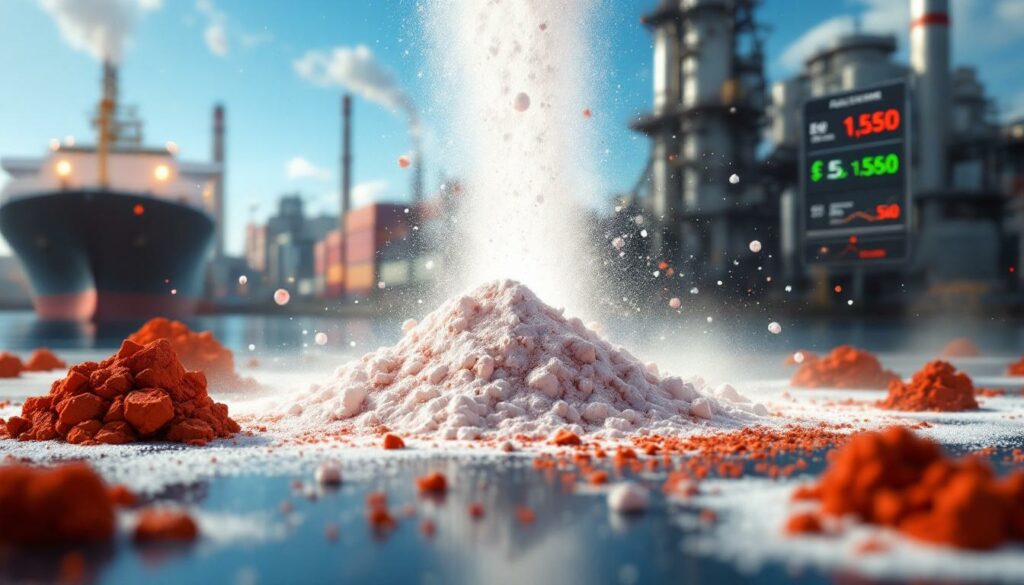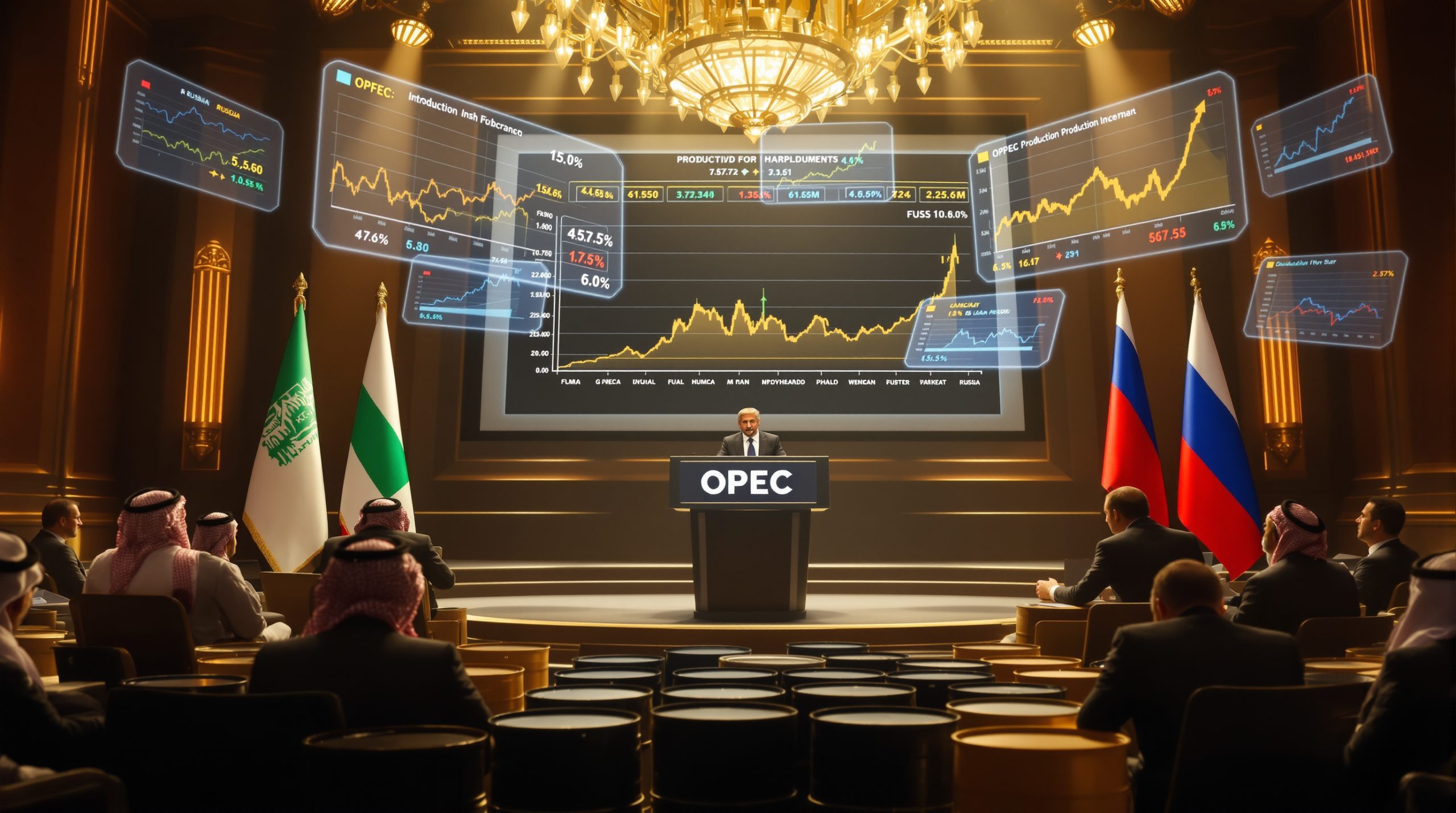The Alumina Market in 2025: Supply Conditions and Price Outlook
The alumina market is currently experiencing a period of notable weakness, with spot prices remaining subdued despite recent movements in the futures market. As industry analysts track the evolving dynamics between domestic and international markets, the interplay of supply factors and price indicators reveals important trends for market participants to consider.
Current Market Snapshot
The alumina industry continues to operate with relatively loose supply conditions, creating persistent downward pressure on prices. As of early July 2025, domestic alumina prices hover around 3,116 yuan/mt, while FOB Western Australia alumina is trading at $361.6/mt as of July 4.
The most actively traded September 2025 alumina futures contract (2509) closed at 3,012 yuan/mt on July 5, reflecting a slight decrease of 12 yuan/mt (0.40%) from the previous session. Notably, the contract traded within a range between 3,025 yuan/mt and 2,981 yuan/mt, with open interest standing at 272,000 lots.
A key market indicator is the spot-futures spread, which currently shows a 75.75 yuan/mt premium for spot prices over futures. This spread serves as an important signal for potential arbitrage opportunities that could influence near-term market movements.
Production Capacity and Supply Conditions
Despite a modest decrease in operating capacity by 340,000 mt/year to 88.63 million mt/year, the overall supply in the spot market remains relatively loose and alumina prices remain in the doldrums. According to Shanghai Metal Market (SMM) data, only a limited number of manufacturers are conducting routine maintenance activities, contributing to the persistent oversupply conditions.
"The alumina market continues to operate with excess capacity, creating a fundamental imbalance that keeps prices in the doldrums despite occasional surges in futures market activity." — SMM Alumina Morning Comment, July 7, 2025
This oversupply situation persists as a primary factor behind current price weakness, with manufacturers maintaining high operating rates across most production regions.
Why Are Alumina Prices Remaining Depressed?
The persistent weakness in alumina prices can be attributed to several interconnected factors that have created an imbalance in market fundamentals.
Structural Oversupply
The most significant pressure on alumina prices stems from the structural oversupply conditions. With operating capacity at 88.63 million mt/year despite a recent small decrease, production continues to outpace demand. Only a minimal number of manufacturers are conducting routine maintenance, keeping available supply abundant in the spot market.
This supply-side pressure means that the market lacks the production discipline needed to rebalance fundamentals. Without significant production cuts or unexpected disruptions, the excess capacity will likely continue weighing on prices.
Purchasing Behavior
Market participants have adopted cautious purchasing strategies in the current environment. With spot supply remaining loose, buyers have little incentive to build inventory beyond immediate needs. This behavior pattern creates a self-reinforcing cycle:
- Buyers limit purchases to essential volumes
- Sellers compete for limited demand
- Prices remain under pressure
- Buyers continue cautious purchasing, expecting stable or lower prices
The hesitancy among aluminum producers to make substantial forward purchases has effectively capped any potential price rallies.
Inventory Management
Sufficient inventory levels across consumption points have reduced urgency in procurement. Aluminum producers have optimized their supply chains to maintain adequate alumina stocks while minimizing working capital tied up in raw materials. This inventory management approach further dampens spot market activity and price recovery potential.
What Recent Market Developments Are Important?
Recent market developments highlight several notable shifts that could influence near-term price dynamics and trading patterns.
Raw Material Price Stability
The bauxite market has shown remarkable stability, with prices unchanged across major origins. Recent bauxite project benefits have not yet significantly impacted the broader market dynamics:
| Bauxite Type | Price ($/mt) |
|---|---|
| SMM Imported Bauxite Index | $74.3 |
| Guinea Bauxite CIF | $74.0 |
| Australia Low-Temperature Bauxite CIF | $70.0 |
| Australia High-Temperature Bauxite CIF | $61.0 |
This price stability in the primary raw material input removes a potential catalyst for alumina price movements, as producers face consistent input costs from the mining sector.
Input Cost Adjustments
While bauxite prices have remained stable, there have been developments in other cost components. A major refinery in Shandong recently announced a 15 yuan/mt increase in caustic soda prices, bringing the new level to 750 yuan/mt (32% ionic membrane liquid). This adjustment translates to approximately 2,344 yuan/mt at 100% concentration.
Caustic soda represents a significant cost component in alumina production, with typical consumption rates ranging from 70-100 kg per ton of alumina. This price increase, while modest, adds incremental pressure to producer margins in an already challenging market environment.
Trading Activity
Recent market activity includes an offshore transaction of 30,000 mt of alumina at $363/mt FOB Eastern Australia for August shipment reported on July 5. This transaction provides an important benchmark for international pricing and suggests relative stability in global markets.
How Are International Markets Affecting Domestic Prices?
The interplay between international and domestic markets creates important dynamics that influence price formation and trading decisions. Tariffs impact analysis shows how trade policies can further complicate these relationships.
Import Economics
The economics of importing alumina into China remain unfavorable, effectively closing the import window. Current calculations reveal:
- FOB Western Australia price: $361.6/mt
- Ocean freight rate: $21.80/mt
- USD/CNY exchange rate: approximately 7.18
- Landed cost calculation: ($361.6 + $21.80) × 7.18 = approximately 3,192 yuan/mt
This landed cost creates a premium of 76.23 yuan/mt over domestic prices, making imports economically unattractive under current conditions.
The closed import window has important implications:
- Reduced competition from international suppliers in the domestic market
- Limited arbitrage opportunities for traders
- Greater price isolation between domestic and international markets
- Increased influence of domestic supply-demand fundamentals
Global Supply Chain Factors
International supply chains continue to function smoothly, with ocean freight rates remaining stable. The $21.80/mt shipping cost from Australia to China reflects normal logistical conditions without significant disruptions or constraints.
This stability in shipping costs provides predictability for market participants and reduces volatility from logistics-related factors. However, it also means that any shifts in the import-export balance will likely come from changes in underlying alumina prices rather than transportation costs.
What Is the Current Warehouse Situation?
The warehouse and inventory situation provides important insights into physical market conditions and potential delivery dynamics.
Futures Delivery Warrants
As of July 4, 2025, total registered alumina warrants stood at 21,300 mt, unchanged from the previous report. The regional distribution reveals significant concentration:
| Region | Warrant Volume (mt) | Percentage of Total |
|---|---|---|
| Xinjiang | 17,400 | 81.7% |
| Guangxi | 3,902 | 18.3% |
| Shandong | 0 | 0% |
| Henan | 0 | 0% |
| Gansu | 0 | 0% |
| Total | 21,300 | 100% |
This warehouse distribution highlights the concentration of deliverable supply in Xinjiang, creating potential logistical considerations for those considering physical delivery against futures positions.
Inventory Implications
The limited warrant volume (21,300 mt) relative to the overall market size suggests tight deliverable supply for futures contracts. This discrepancy between overall market supply (which remains loose) and registered deliverable supply creates interesting dynamics for futures-spot convergence as contract expiration approaches.
The regional concentration in Xinjiang (81.7% of total warrants) adds a geographical dimension to delivery considerations, as transportation costs from this region to major consumption areas must be factored into trading strategies.
What Is the Short-Term Market Outlook?
The short-term outlook for alumina prices incorporates both technical market factors and fundamental supply-demand considerations. The commodity price impact on producer performance will be critical to watch.
Price Direction Indicators
Recent futures market activity has created conditions that could support a modest rebound in spot prices:
-
Arbitrage Potential: The futures surge has brought the risk-free arbitrage window between futures and spot markets close to opening, stimulating more active inquiries from both futures and spot traders.
-
Supply Response: In response to increased inquiries, suppliers have begun raising quotes, leading to periodic tightening of spot supplies.
-
Futures Momentum: The futures market often serves as a leading indicator, with spot prices eventually following the direction signaled by futures movements.
-
Warehouse Transfers: Potential shifts in transfer to delivery warehouse demands could impact near-term availability in specific regions.
Market Assessment
Based on current conditions, the short-term outlook suggests a slight rebound in spot alumina prices is possible. However, any sustained price recovery will depend on more fundamental shifts in the supply-demand balance.
"In the short term, spot alumina prices may see a slight rebound. But subsequent trends will still depend on changes in supply and demand fundamentals, futures price movements, and shifts in transfer to delivery warehouse demands." — SMM Alumina Morning Comment, July 7, 2025
The medium-term outlook remains contingent on whether production adjustments materialize or demand conditions improve significantly. Without such changes, the market is likely to maintain its current pattern of periodic price fluctuations within a relatively constrained range.
FAQ About the Alumina Market
What is causing the current weakness in alumina prices?
The primary factor behind current alumina price weakness is the relatively loose supply in the spot market. Operating capacity remains high at 88.63 million mt/year despite a recent small decrease of 340,000 mt/year. With only limited maintenance activities occurring across the industry, the supply-demand balance continues to favor buyers, keeping prices under pressure.
This oversupply situation is the fundamental reason alumina prices remain in the doldrums, creating persistent downward pressure despite occasional futures market rallies.
How do futures prices affect the spot alumina market?
Futures prices create important signals for spot market participants and can influence physical market dynamics through several mechanisms:
- Market Sentiment: Futures movements shape expectations about future price direction.
- Arbitrage Opportunities: When the spread between futures and spot prices reaches certain thresholds, it creates arbitrage opportunities that can drive physical market activity.
- Inventory Decisions: Producers and consumers adjust inventory strategies based on futures curves.
- Quote Adjustments: Suppliers often reference futures movements when adjusting spot market quotes.
Recent surges in alumina futures have brought the risk-free arbitrage window between futures and spot markets close to opening, stimulating more active inquiries from traders and causing periodic tightening of spot supplies as suppliers raise quotes in response.
What would cause alumina prices to recover significantly?
A significant recovery in alumina prices would likely require one or more of the following:
- Production Cuts: Substantial reductions in operating capacity, either planned or forced by economic factors.
- Demand Increase: Accelerated consumption from aluminum smelters, potentially driven by improved downstream demand.
- Supply Chain Disruptions: Major disruptions to bauxite supply chains or logistics networks.
- Input Cost Increases: Significant rises in key inputs like caustic soda or energy that force producers to raise prices to maintain margins.
- Policy Interventions: Environmental regulations or industry policies that constrain production.
Without these catalysts, the current oversupply conditions are likely to limit sustained price increases. Further mineral beneficiation insights suggest that downstream processing could play a role in balancing the market.
Is importing alumina currently economical for Chinese buyers?
No, the import window remains closed. With FOB Western Australia alumina at $361.6/mt and freight at $21.80/mt, the landed cost at major Chinese ports translates to approximately 3,192 yuan/mt. This is 76.23 yuan/mt higher than domestic alumina prices, making imports uneconomical at current price levels.
The closed import window effectively isolates the domestic market from international supply, reducing competitive pressure on domestic producers but also limiting options for consumers.
How do alumina warrant levels impact market dynamics?
The current alumina warrant level of 21,300 mt is relatively low compared to overall market size, suggesting tight deliverable supply for futures contracts. This creates several market implications:
- Delivery Risk: Limited warrants increase the risk of a squeeze during delivery periods.
- Regional Premiums: The concentration of warrants in Xinjiang (81.7%) creates potential regional price disparities.
- Futures-Spot Convergence: Limited warrants can affect how futures and spot prices converge at contract expiration.
- Storage Strategies: Producers may adjust their warrant registration strategies based on market conditions.
Traders actively monitor warrant levels as an indicator of physical market tightness and potential delivery issues.
Disclaimer: This market analysis is based on current conditions as of July 2025. All forecasts involve uncertainty and are subject to change as market conditions evolve. Readers should consider this information as one input into their decision-making process rather than a definitive price prediction.
Looking to Stay Ahead in the Alumina Market?
Don't miss crucial market-moving discoveries across the minerals sector. Discovery Alert's proprietary Discovery IQ model delivers instant notifications on significant ASX mineral discoveries, helping you identify actionable opportunities before the broader market. Visit our discoveries page to see how major mineral discoveries can generate substantial returns.




